The joy of 'cosycore' and hunkering down
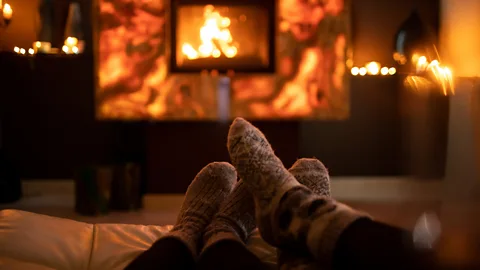 Getty Images
Getty Images"Less gym bunny, more snoozy bear" – for those who wish to ease gently and cosily into the new year, here's the essential guide to winter hibernating in snuggly style.
January. Traditionally, it's a time for new year's resolutions – for turning your back on the excesses of December, and hitting the gym or dusting off your trainers for a run; for punishing healthy eating regimes largely centred around juice, or at the very least, attempting to go "dry" for the first month of the year.
But what if January is, in fact, exactly the wrong moment for "new year, new you"? In the northern hemisphere at least, January is bad enough as it is: it's cold, it's dark, and Christmas and new year have probably left you exhausted and broke… none of which scream "unlimited sources of willpower and energy".
More like this:
What if we could instead lean into the fact that it is still winter, and embrace the urge to hunker down? Leave the renewal for springtime – and let January be a time to rest and recharge; to hibernate, rather than be hard on ourselves. Less gym bunny, more snoozy bear.
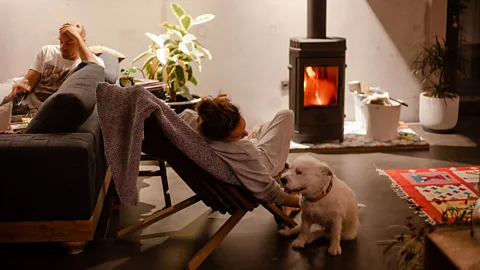 Getty Images
Getty ImagesThis is a shift in approach that seems to have been gaining popularity in recent times, with lifestyle and fashion trends increasingly embracing all things cosy and lazy, rather than promoting the push-yourself, new-year-reset hustle of yore.
This can be wholesome – consider the rise of "cosycore" and the "cosy girl" aesthetic, which as the name suggests, is all about prioritising comfort, warmth and ease in your outfits and lifestyle. Think big soft slouchy jumpers, co-ordinating loungewear, oversized scarves; think cradling highly-flavoured seasonal lattes in mittened hands on frosty walks, or snuggling under a big blanket while a posh scented candle burns.
Asos currently has a dedicated cosycore edit, selling everything from fluffy bucket hats to knitted loungewear. And the cosy girl knows the value of wearing a giant coat and flat shoes on a night out, rather than freezing in a mini dress or teetering across ice in stilettos. But they also know the value of rest: of making a virtue of staying in. So it's no wonder cosycore tracks effortlessly into interiors too: think layered blankets, cushions and throws in soft textures and warm neutral tones (cream, oatmeal, caramel, brown), all lit by low lighting.
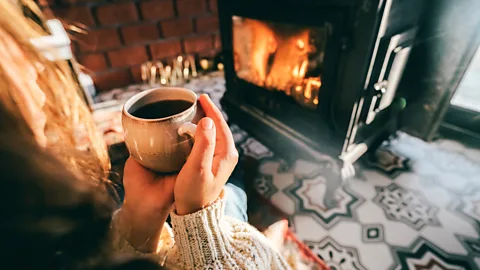 Getty Images
Getty ImagesThe #CozyGirl tag has currently racked up more than 31m views on TikTok – and no wonder. It is, after all, a practical and easily emulated trend: most of us have an oversized sweater somewhere in our wardrobes, and the cost-of-living crisis has had most of us huddling under blankets, whether it’s a cute aesthetic or not. Cosycore is a way to aestheticise the basic seasonal necessity of staying warm: curling up on the sofa can now be as carefully curated as the lifestyle content of any fitness or wellness influencer.
And if that helps us feel less bad about spending January under a pile of soft furnishings, rather than posting personal bests on a fitness app, I'm here for it. But cosycore is not the only trend to advocate hibernating. Consider, too, the cosy girl's evil twin: goblin mode.
This time last year, the term "goblin mode" had become so popular on TikTok, it became the Oxford English Dictionary's word of the year. It defined goblin mode as "a type of behaviour which is unapologetically self-indulgent, lazy, slovenly, or greedy, typically in a way that rejects social norms or expectations".
Goblin mode is the opposite of the artfully curated aesthetic life; it might involve not showering and staying in bed all day and getting the previous night's takeaway over your duvet covers while watching trash TV, and pointlessly scrolling your phone. The curtains might not be opened. Messages could go unanswered. There will almost certainly be very weird snacks.
In 2023, another charming equivalent buzzword was "bed rotting" – when you do nothing but stay in bed all day, as "self-care". It's the opposite of the active, optimising, productive lifestyle – basically, a reminder to take time off now and then, to fully recharge.
The concept of bed rotting was also popularised by TikTok, although older generations will perhaps know it by its former title: the duvet day. Scottish readers, meanwhile, may be reaching for another term – "hurkle-durkle" is their own handy phrase meaning to lounge around in bed long after you should really have gotten up.
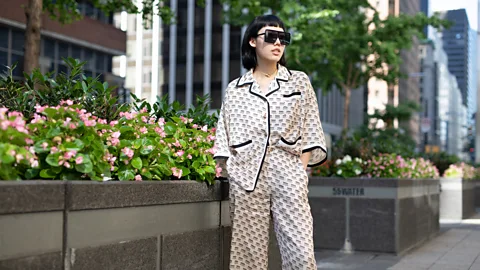 Getty Images
Getty ImagesSuch things are more a mood than a long-term lifestyle; obviously no-one wants too many consecutive days of not brushing their teeth or hair. But sometimes, life is overwhelming, or we need to process bad news, or the weather is foul, or we just need a break from the sheer effort of modern life… and this is when goblin mode calls.
It can be activated at any time of year – tough weeks at work, hangovers and break-ups are all classic triggers. But there's also no time of year when the call is stronger than in January: we tell ourselves it's the moment for self-improvement, but the dark nights and the miserable weather tell another story. Why should we trust a calendar, a made-up system for organising time, over nature's own cycles?
Embrace the season
And in recent years, the idea that we could work with winter, rather than resisting it, has also gained prominence. Katherine May published a hugely successful book, Wintering, about learning how to embrace the season; its subtitle is The Power of Rest and Retreat in Difficult Times. The book includes taking tips from Nordic countries for winter coping mechanisms, from candles and coffee to saunas and swimming. "We must learn to invite the winter in," she writes, "to recognise the process, engage with it mindfully, even to cherish it."
Hers is a more philosophical take on a wider trend – for several years now, Brits and Americans have been somewhat obsessed with how other countries cope with the cold. You probably know what word is coming next: yes, it's hygge.
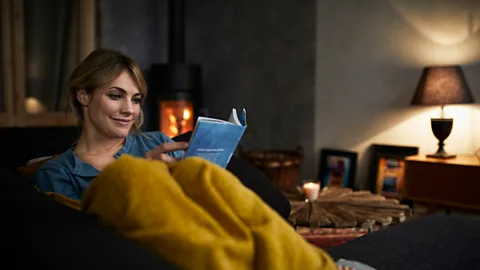 Getty Images
Getty ImagesThe Danish concept, for "a quality of cosiness and comfortable conviviality that engenders a feeling of contentment or well-being" (as, once-more, defined by the OED), exploded in popularity around the world in 2016. The Scottish version of hygge, "coorie", or còsagach in Gaelic, was soon being explored by Gabriella Bennett in her book The Art of Coorie. In an era of great political turmoil, it seems we were ready to embrace the idea that happiness could be found in small pleasures like thick socks, hot chocolate and cinnamon buns.
Turmoil has hardly gone away in the intervening years, and trends being what they are, many other northern nations have been plundered for their marketable "secrets" to a happier life. Yet it is striking how many of these seem to go back to similar principles: stop fighting the seasons or trying to be productive, and embrace the pleasures of being relaxed, warm and cosy.
Several of these also have a social aspect to them. Norway has koselig – a principle of mood-boosting cosiness, that is less about bed-rotting on your phone, and more about getting the family together to watch films and eat snacks, or going on a walk with your friends that ends in a snug pub, ideally with a roaring fire. Similarly, the Dutch have gezelligheid: a term for a sense of conviviality and cheerful wellbeing. You couldn't be gezellig by yourself, but gathering with friends in a cosy café or in the bustle of a warm and welcoming bar is gezellig.
Then the Swedes have mys: basically, another term for cosy snuggling with others. As well as a noun, mys is used as a handy suffix in Swedish: so Fredagsmys refers to relaxing on a Friday night with friends and family after a long week – think flopping in front the television, opening a bottle of wine, or enjoying a relaxed meal together.
 Getty Images
Getty ImagesIt is striking that we're living in an era where such trends can span the spectrum from aspirational aesthetics to full ferality – and surely the pandemic is in part to blame. While some predicted a return to glamour, sharp dressing, or a roaring '20s hedonism in the post-pandemic world, the reality has been rather more muted. Some of the shifts of lockdown look to be here to stay, with a desire for comfort chief among them. We may be going back to offices and parties, but many of us are not ready to let go of the elasticated waistbands or the cosy knits entirely.
In clothing, comfort came to us from two directions: sportswear becoming everyday wear, and nightwear becoming daywear. Even before Covid-19, athleisure was increasingly normalised as acceptable public clothing, but since it, it feels like the uniform of joggers, leggings, sports bras, sweatshirts and trainers is definitively here to stay.
The global activewear industry is growing rapidly, and while some of that is highly technical sports gear, much is comfortable, practical outfits that never need see the inside of a gym. High-end athleisure that crosses into stylish everyday wear is still selling particularly well: sales of Lululemon soared by 24% in 2023, while the cult athleisure brand Adanola reported a 311% increase in turnover in 2022 to 2023.
The pandemic also saw the whole concept of loungewear really taking off, with the lines between sleepwear and actual clothing blurred. Suddenly, deliciously comfy clothes to wear just for yourself, just at home, became a desirable new category.
Loungewear and sleepwear are currently make up a multi-billion dollar market – and research predicts substantial growth over the next decade, with a recent report from RationalStat concluding that "the rise of remote work and telecommuting, accelerated by the Covid-19 pandemic, has led to increased demand for comfortable clothing suitable for both work and leisure… Further, the importance of sleep and relaxation for overall wellbeing has gained attention."
 Getty Images
Getty ImagesEvery fashion website and magazine now have their guides to the best loungewear; in the UK, companies like Hush, The White Company, Everlane and good old Marks and Spencer show up repeatedly – although there's really no limit to how luxurious you can go if you have the cash to splash. Net-a-Porter has a whole "at home" section, which features cashmere items costing thousands. Meanwhile, posh pyjamas have become something of a status symbol – from Sleeper's flamboyant feather-trimmed sets to Olivia von Halle's opulent silk PJs to Desmond & Dempsey's patterned "fancy" jim-jams, these are almost too good not to show off. And, if you throw over an on-trend padded puffa duvet coat, you can basically go to the shops while still feeling like you are in bed.
Of course, true goblin mode really requires you to embrace your mankiest jogging bottoms and that weird T-shirt you got free 15 years ago… But the abundance of genuinely luxe, comfortable on-trend clothing now makes it possible, at least, to turn hiding from January indoors into a stylish as well as a cosy endeavour – allowing you to get koselig or gezellig in front of your friends in the chicest soft joggers or the snuggliest of hoodies.
Whether you call it self-care or cosycore, wintering or hygge, swapping the pressures of new-year optimisation for creating a lifestyle out of being comfortable seems like the perfect way to welcome 2024. Pass another mulled wine, and throw a blanket over me – I'm in.
What Time is Love? by Holly Williams is published by Orion.
If you liked this story, sign up for The Essential List newsletter – a handpicked selection of features, videos and can't-miss news delivered to your inbox every Friday.
